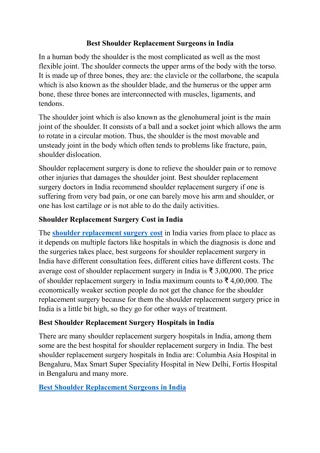Understanding Arthrokinematics: Joint Motion and Types of Movement
Arthrokinematics involves the study of joint motion at the articular surfaces, including osteokinematic and arthrokinematic motions, end feels, and types of arthrokinematic motion like roll, slide or glide, and spin. These movements are essential for normal range of motion and are influenced by the shape of joint surfaces. Recognizing and understanding these concepts can help in assessing joint function and mobility.
Download Presentation

Please find below an Image/Link to download the presentation.
The content on the website is provided AS IS for your information and personal use only. It may not be sold, licensed, or shared on other websites without obtaining consent from the author. Download presentation by click this link. If you encounter any issues during the download, it is possible that the publisher has removed the file from their server.
E N D
Presentation Transcript
Joint Motion Osteokinematic: Bone moving on another bone; joint motion; path of moving bone Arthrokinematic: motion that occurs between the articular surfaces of joints; joint surface motion
Osteokinematic Motion AROM: muscles move joint through ROM PROM: joint is passively moved through ROM Why perform? To determine available ROM Assess end feel Quality of the feel when slight pressure is applied at the end of the joint s PROM
End Feels Abnormal Bony fracture Muscle spasm Reflex guarding Empty Pain limits Springy block Meniscus tear Normal Bony (hard) Elbow extension Soft tissue stretch (firm) Hip ER Soft tissue approximation(soft) Elbow flex
Arthrokinematic Motion Joint surface shape determines type of motion occurring at a joint Joint surfaces are curved Concave Convex Arthrokinematics must occur for normal ROM Accompany AROM but not under voluntary control
Types of Arthrokinematic Motion Roll (A) Rolling of 1 joint surface on another New points on each surface make contact throughout ROM Multiple points along one rotating articular surface contact multiple points on another articular surface Tire rotating across a stretch of pavement
Types of Arthrokinematic Motion Slide or glide (B) Single point on one articular surface contacts multiple points on another articular surface Linear movement of a joint surface parallel to the plane of the adjoining joint surface 1 point on a joint surface contacts new points on the adjacent surface Stationary tire skidding across a stretch of icy pavement Ice skater s blade
Types of Arthrokinematic Motion Spin(C) Rotation of the movable joint surface on the fixed adjacent surface Same point on each surface remains in contact with each other Spin occurs along a central longitudinal axis regardless of convex/concave Top spinning on table Humerus rotating in glenoid fossa (IR/ER) Prox RUJ supination/pronation * Most joint motion = a combination of all 3
Convex-Concave Rule Concave on convex Concave joint surface moves in the same direction as the body segment s motion Convex on concave joint surface Convex joint surface moves in the opposite direction of the body segment s movement
Arthrokinematics and Physical Therapy Normally arthrokinematic motions occur naturally and are integral to proper ROM However, normal arthrokinematics may become dysfunctional Ex decreased shoulder joint inferior glide with shoulder impingement syndrome Physical Therapy Assessment= Joint Play Treatment = Joint Mobilization
Joint Surface Positions When a joint is congruent, the joint surfaces Have maximum contact with each other Are tightly compressed Are difficult to distract Ligaments and capsule are taut Are in the CLOSED PACKED position Position of testing for stability Often in this position when injured
Joint Surface Positions In all other positions, the joint surfaces are incongruent Open-packed or loose-packed position or resting position Capsule and ligaments lax Minimal congruency between the articular surfaces Joint mobilization techniques are started in this position
Accessory Motion Forces Traction Approximation Shear























